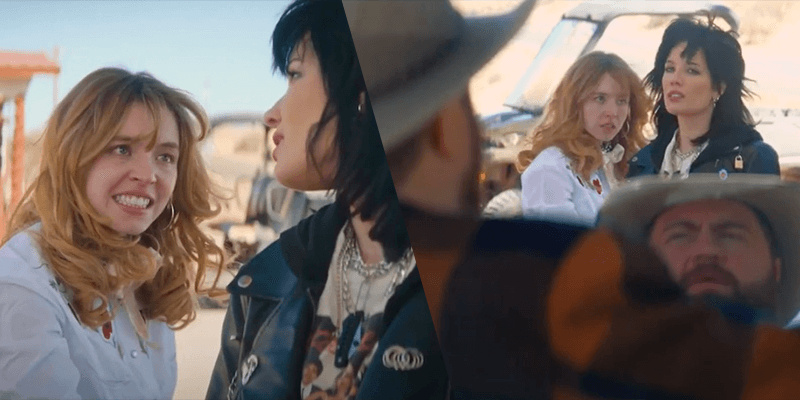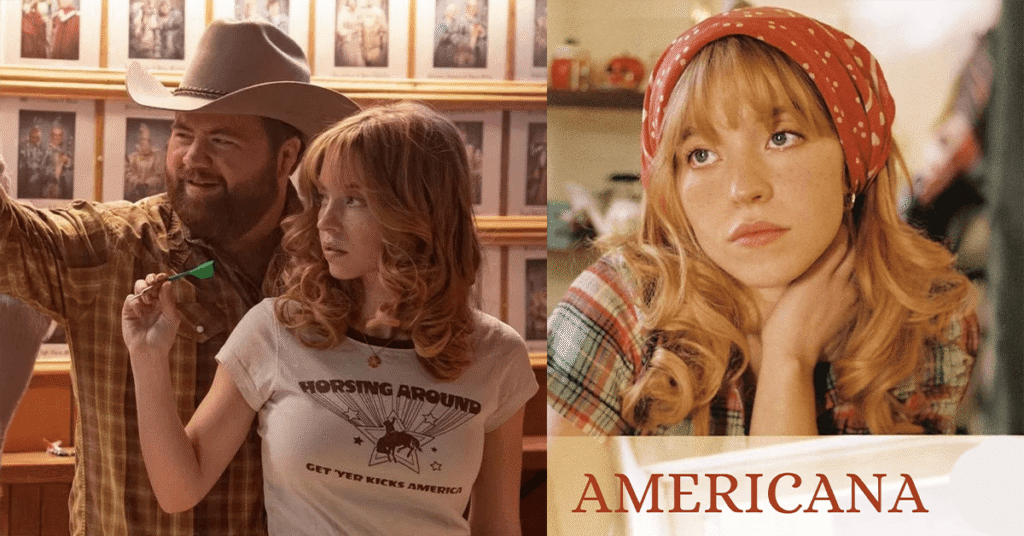Introduction: Americana: A Missed Opportunity in Indie Crime
Americana attempts to be a clever neo-Western crime drama that plays with classic genre tropes but fails to deliver on its promise. Less of an indie homage and more of an imitation, Americana attempts to capture the essence of the likes of Tarantino and Coen Brothers but falls flat in its execution. From its superficial homage to crime thrillers to its lack of originality, the show’s familiarity with crime genres leaves much to be desired. The only thing that makes it stand out is its attempt at satire, though it doesn’t succeed in capturing the humor or sophistication that its predecessors are known for.
In Americana, crime dramas with serialized storylines, similar to the likes of Columbo or neo-noir from the ’90s, find their influence—yet the show seems to just repeat these genre elements without the finesse to make them fresh. Let’s dive deeper into why Americana doesn’t quite hit the mark as a satirical crime homage.
The Plot of Americana: A Chaotic Tangle of Crime and Characters
Americana is the debut feature from writer-director Tony Tost, a show that attempts to juggle multiple characters, all linked by a single crime involving a priceless artifact. The story opens with a non-chronological sequence that features Dillon MacIntosh, an abusive father, and his wife Mandy, who steals an item that kicks off the chaotic events of the series. What follows is a narrative that tries to emulate Tarantino-style storytelling, yet lacks the engagement or depth one would expect from such an endeavor.
The story follows the aftermath of a heist gone wrong, involving Penny Jo (Sydney Sweeney) and Lefty Ledbetter (Paul Walter Hauser), two individuals who find themselves at the center of a chaotic crime spiral. The show also features a subplot involving Native American revolutionaries led by Ghost Eye (Zahn McClarnon), who take a young boy, Cal, believing he has ties to their cultural history. Each character is motivated by their desire for the artifact—a Native American ghost shirt that is the key to unlocking the story’s larger narrative.
Despite the intriguing premise, Americana fails to provide the necessary emotional depth or character development, relying on a rote screenplay and underwhelming plot twists that make it hard to invest in the characters’ fates.

The Characters: Stereotypes and Underwhelming Performances
While Americana boasts an ensemble cast of notable actors, including Paul Walter Hauser and Simon Rex, the performances are hindered by weak characterizations and lackluster dialogue. Sydney Sweeney’s portrayal of Penny Jo is especially criticized for being insincere and fails to evoke any emotional depth. Meanwhile, Halsey’s performance as Mandy is arguably the most effective, offering more genuine emotional resonance despite her relatively limited acting experience.
Unfortunately, the show leans too heavily on tropey characterizations—Penny Jo is the alienated waitress, and Lefty Ledbetter is the bumbling and awkward character reminiscent of Jesse Plemons from Fargo. The reliance on stereotypes rather than fleshed-out personalities prevents the cast from showcasing their full potential, making their performances forgettable at best.
The Failure of Americana’s Satirical Approach
Though Americana tries to play with genre conventions, its attempts at satire fall flat. The show embraces its self-awareness yet fails to create meaningful commentary on the very indie crime films it seeks to lampoon. It’s clear that the creators intended to poke fun at the neo-noir genre by exaggerating its elements, but instead, it only reinforces the clichés without adding anything fresh to the table. Americana remains a mishmash of familiar tropes, from a heist gone awry to eclectic characters with half-baked plans, all leading to a climax that doesn’t provide the punch it promises.
The show’s failure to balance satire and sincerity leads to an experience that feels tired and formulaic. It’s as if Americana tries to stand out by mocking its influences, but it lacks the sharp wit needed to make it a standout piece of entertainment.
Americana’s Visual Style: Homage or a Cheap Imitation?
One of the most striking features of Americana is its visual style, which draws heavily from its crime drama influences. From its non-linear storytelling to its cinematic composition, the show clearly wants to evoke the feel of classic neo-noir films. However, much like its characters, the visuals come across as more surface-level than substantial. The show’s attempts at visual flair often feel like cheap imitations of better-crafted works like Pulp Fiction and Fargo, leaving little room for originality.
The production design, particularly the use of costumes and sets, further emphasizes the superficial nature of the show. Sydney Sweeney’s Party City wig and fake freckles are the most glaring examples of the film’s inability to provide authentic characterization.
Conclusion: Americana: A Missed Satirical Opportunity
In the end, Americana is neither an authentic crime homage nor a successful satirical commentary on neo-noir or indie crime genres. The show’s inability to find a balance between self-aware satire and genuine emotional investment makes it a disappointing experience for viewers. Despite its talented cast and interesting premise, Americana ultimately feels like a hollow imitation, struggling to find its voice in an already saturated genre.
Quote: “Stay connected to keep up with more exciting content, reviews, and insights on your favorite shows and movies.”
FAQs
1. What is Americana about?
Americana is a neo-Western crime drama that follows multiple characters whose lives are intertwined by a stolen Native American artifact. It attempts to pay homage to neo-noir and indie crime films, though it struggles with execution.
2. Who stars in Americana?
The cast includes Sydney Sweeney, Paul Walter Hauser, Halsey, Zahn McClarnon, and Simon Rex.
3. Is Americana a satire?
While Americana attempts to satirize indie crime genres, it fails to deliver effective commentary, instead leaning on superficial tropes without adding meaningful satire.
4. Why is Americana compared to Pulp Fiction and Fargo?
The show draws clear influence from both Pulp Fiction and Fargo in its narrative structure, character types, and overall tone, though it lacks the same level of sophistication and impact.

